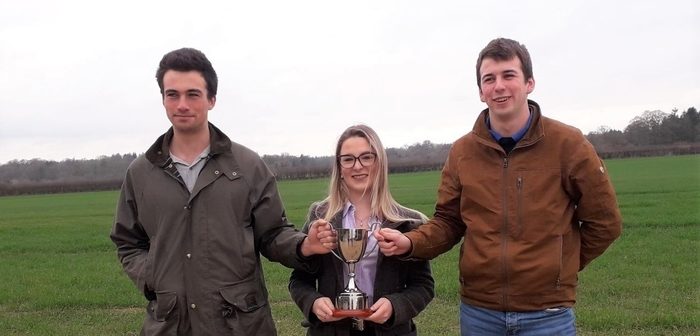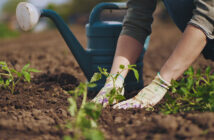A team of agriculture students from Aberystwyth University’s Institute of Biological, Environmental and Rural Sciences (IBERS) are the winners of the NIAB Agronomy Cup for the second year.
Philip Dray, Olivia MacGarvie, William Watson and Will Daviesachieved the highest gross margin of £2,131/ha in the annual winter wheat trial plotcompetition, based on a yield of 12.24 t/ha and an input cost of £72.15/ha.
IBERS-Aberystwyth is the first team to lift the trophy twice since the competition began, after winning in 2017 and coming a close second in 2016. They beat six other university and colleges, with a team from Diss Young Farmers Club, in Norfolk, coming second and Lancashire’s Myerscough College taking third place.
The competition was carried out on the wheat variety KWS Siskin on five sites across the UK, although none of the teams achieved a milling specification this year.
Philip described the reasoning behind the IBERS-Aberystwyth’s technical recommendations. “There was already some septoria present in the crop by T0. By applying Bravo (a.i. chlorothalonil) at the T0 and T1 timing we hoped to slow the spread of the disease. We then used Ignite (a.i. epoxiconazole) at T1 to reduce the risk of yellow rust infection at the Hereford site.”
With KWS Siskin’s score of 6 for lodging the IBERS team applied a full rate of chlormequat at T1. “There was a high level of residual nitrogen in the soil, so we avoided additional nitrogen and, by adding a PGR, we hoped to prevent the crop from lodging,” said Philip.
By T2 the team had observed eyespot on the stem, so added Tracker (a.i. boscalid + epoxiconazole) as an eradicant and protectant, including reducing the further spread of septoria. They used Amistar Opti (a.i. azoxystrobin + chlorothalonil), for the chlorothalonil for additional septoria protectant activity, then added Folicur (a.i. tebuconazole) at T3 to prevent fusarium infection.




